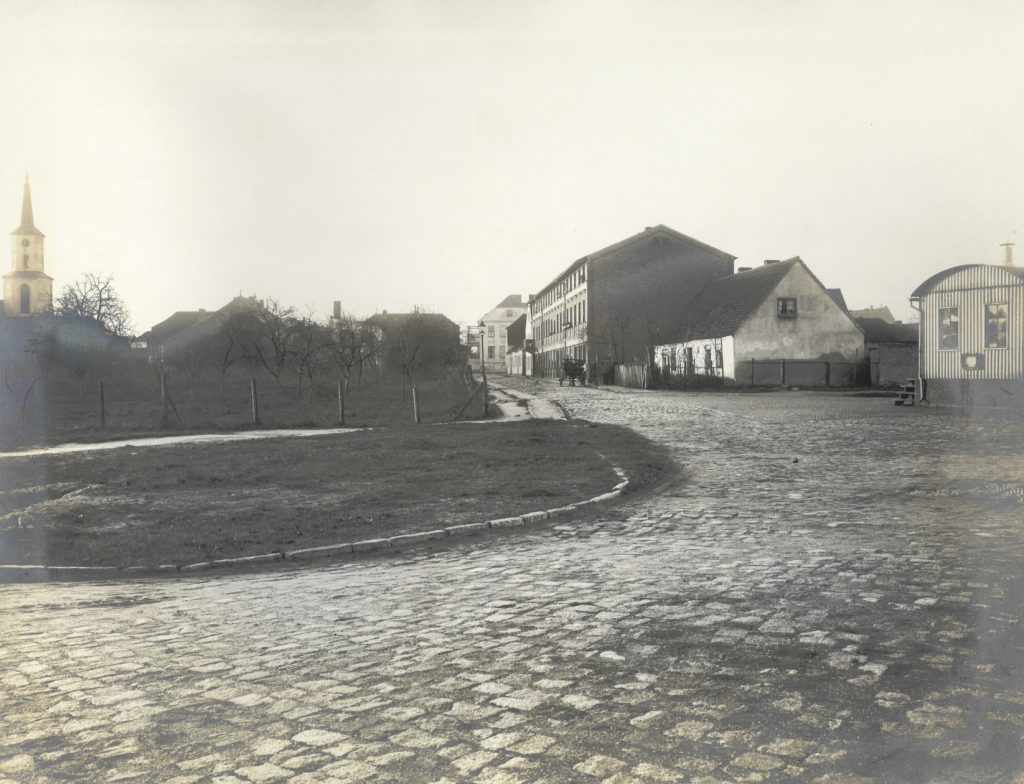[overview] [last station] [next station]
The Badstraße was called Badergasse (barber alley) in the 17th and 18th century, which explains the origin of its name. It indicates that a barber (Bader) once lived in Badergasse or offered his services here. We know from history that for the common people barbers were the only point-of-recourse for illnesses, accidents or chronic sufferings. They already existed in the late Middle Ages and they were no quacks, because they had to pass an exam before they could practise their profession.
It is known from Teltow sources that there was a bathhouse in Badergasse. Its erection must have been commissioned by the magistrate, because rent for the bathhouse had to be paid to the finance department. Because it survived the fire of 1711 as one of very few undamaged houses, we can confidently place its construction and first existence in the 17th century.
However, it became impossible to use around 1760 due to disrepair. The successor building in the 19th century on the same property was the so-called poorhouse. The location of the former bathhouse was roughly on the western corner of Badstraße and Oderstraße.
In addition to history, there are also stories connected with Badstraße:
Where the Oderstraße runs today, there used to be the southern shore of Lake Schönow (Schönower See), which lost its existence through no fault of its own when the Teltow Canal (Teltowkanal) was built. There, near Badstraße, according to tradition, the Schönowers sometimes landed with a boat when they went to the Andreaskirche for worship. (Schönow had no church of its own so its inhabitants were “parishioned” in Teltow).
On this shore, east of Badstraße, there is said to have been a public meadow where one could also bleach laundry or linen. On warm summer evenings, this place was certainly often a meeting place for Teltow’s youth, where they enjoyed socializing.


